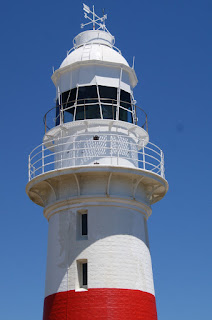Low Head is associated with the earliest phases of European exploration and settlement in northern Tasmania. The current Low Head Lighthouse is located on the eastern side of the entrance to the Tamar River in Tasmania, about six kilometres north of Georgetown and fifty nine kilometres from Launceston. It was built in 1888, replacing an older lighthouse that was erected on this site in 1833.
The first recorded Europeans to enter the Tamar River were Bass and Flinders in 1798. Flinders noted that 'the entrance is certainly a dangerous one'. In 1804 Lieutenant-Colonel William Paterson established the first proper settlement in the region, relocating settlers and convicts from Norfolk Island and soon intermittent pilot services were established. By 1806, there were a total of 276 people around Port Dalrymple. The community was dependent for its very survival upon the safe passage of vessels from Bass Strait into the mouth of the river.
Low Head has played a fundamental role in the navigation of shipping in the Tamar River since these times, when the first navigational beacons were positioned in the channels at the mouth of the Tamar and a flagstaff was erected on the headland at Low Head. The construction of the first Low Head Lighthouse commenced in 1833 from a design by Colonial Government Architect, John Lee Archer which came as a result of a recommendation by the Government Committee for Pilotage in 1826.
The lightstation precinct also contains a number of other buildings including the former Head Keeper's Quarters, built in 1891, and later used as Assistant Keeper's Quarters, Head Keeper's Quarters, built in 1941, and Assistant Keeper's Quarters, built in 1916. In 1929, the fog signal building was constructed. Uniquely, its signal apparatus remains substantially intact and in working order.
The lighthouse is owned and operated by the Australian Marine Safety Authority, while the remainder of the Light Station is managed by the Parks and Wildlife Service. The whole of the site is listed on the Register of the National Estate and on the Tasmanian Heritage Register.
Main Text & Information Sources –
Interpretive Signs at the Site
Australian Heritage Database



















